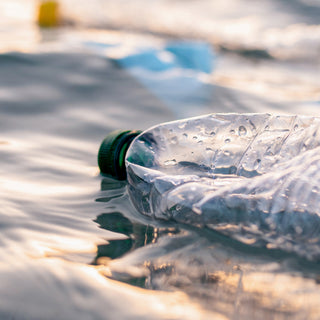
Federal Requirements for Water Filters
While we acknowledge that opinions may vary on regulations, adhering to them is non-negotiable. Compliance is crucial for product availability and safety. Our family-run business is hyper focused on staying up-to-date on federal regulations and following them. Helping you understand applicable water laws is how we stay true to our mission.
As a leader in the water filter industry, we recognize the importance of regulations set by local and federal agencies. Transparency is a fundamental principle at BOROUX, and we are committed to providing consumers with clear and accurate information. We want you to be empowered with knowledge about the filters you use every day.
Products, especially water filters, making public health claims are subject to federal rules. A public health claims is a claim by a manufacturer that their product will reduce the risk of developing a disease or condition. Specifically, filters that claim to remove living microorganisms (e.g., bacteria and viruses) fall under the regulatory authority of the Environmental Protection Agency (EPA) and the Federal Insecticide, Fungicide, and Rodenticide Act (FIFRA). Because water is closely connected to health it makes sense that water filtration products are held to strict standards.
FIFRA Overview:
Water filters that make public health claims, such as the ability to filter microorganisms, are regulated under FIFRA.
With certain exceptions, a pesticide is any substance or mixture of substances intended for preventing, destroying, repelling, or mitigating any pest, or intended for use as a plant regulator, defoliant, or desiccant, or desiccant, or any nitrogen stabilizer. The EPA is the governing body for pesticides under the FIFRA which was enacted in 1947 by the United States Congress. FIFRA establishes the statutory authority for regulating the sale, distribution, and use of pesticides. The EPA, tasked with implementing FIFRA, oversees pesticide regulation, registration, and enforcement. FIFRA aims to ensure that pesticides are used safely and effectively, minimizing risks to human health and the environment.
Details Matter:
Any product that claims to control microorganisms in drinking water (e.g. e. coli, giardia, cryptosporidium) would fall into one of two categories which are both regulated by FIFRA; 1) a pesticide, or 2) a pesticide device.
Pesticide: Any substance or mixture of substances intended for preventing, destroying, repelling, or mitigating any pest. Examples include: Insecticides, fungicides, rodenticides, antimicrobials (e.g., disinfectants), herbicides, and many pest repellants and attractants (e.g., substances that attract pests to lessen their impact, such as by attracting pests to a trap).
Pesticide Device: An instrument or contrivance, generally working by physical means (e.g., electricity, light, or other mechanical or physical means) and not containing a substance or mixture of substances, that is intended to trap, destroy, repel, or mitigate a pest. Examples include: UV lights, water and air filters not treated with a pesticidal substance, ultrasonic devices, replacement parts (e.g., bulbs) for devices that are themselves intended for pesticidal purposes.
Pesticides are both regulated and required to be registered with the EPA prior to manufacturing and distribution. A pesticide device does not require registration with the EPA, but is still a FIFRA regulated product.
In the examples of pesticide devices on the EPA website, water filters are specifically mentioned. Of note, it is stated that water filters not treated with a pesticidal substance may be considered a pesticide device. This introduces a third category, combination products, which many popular water filters fall into.
Combination products: Where a product that would otherwise be a device also incorporates a pesticidal substance, it may be considered a pesticide product. For example, a filter that physically traps microbial pests (generally a device) would be an antimicrobial pesticide product if it also incorporated a pesticidal substance that kills those pests to improve the efficacy of the entire system.
Simply put, a “Combination” product may require the same full EPA registration as a pesticide product. Water filters that claim to both mechanically extract microorganisms and contain an antimicrobial substance can be seen as a combination product. Those combination water filters could trigger the registration requirements of a pesticide product due to the substances contained within them and the claims the manufacturer is making about its product.
The Treated Article Exemption:
The Pesticide Registration Notice, dated March 6, 2000, clarifies the EPA’s policy regarding the "treated articles exemption" under FIFRA. The notice specifies conditions under which certain treated articles or substances are exempt from FIFRA regulations, particularly focusing on antimicrobial pesticides. It outlines acceptable and unacceptable claims related to public health and non-public health for such products.
EPA regulations in 40 CFR 152.25(a) exempt certain treated articles and substances from regulation if specific conditions are met. Both conditions that must be met are:
- the incorporated pesticide is registered for use in or on the article or substance, and;
- the sole purpose of the treatment is to protect the article or substance itself.
BOROUX foundation filters are considered a treated article under FIFRA. The BOROUX foundation filters contain silver, a registered antimicrobial material preservative, to prevent microorganisms from degrading the BOROUX filter itself. This product is not intended to filter microorganisms.
Conclusion:
Navigating the complex landscape of pesticide regulations requires a thorough understanding of FIFRA requirements and EPA guidelines. With unwavering dedication to regulatory compliance, and transparency BOROUX sets a benchmark for the water filtration industry. Prioritizing safety, efficacy, and ethical responsibility, BOROUX aims to earn the trust and confidence of regulators, and consumers.
There is a proliferation of products on the market today that are operating in a state of non-compliance. Many companies will lead you to believe that FIFRA has recently been changed, that the rules have been rewritten to target specific brands. However these regulations and policies have been in place for over 20 years. Unfortunately, many in the water filtration industry don't know or have disregarded these laws.
Before any BOROUX water filtration product is introduced to the market, it undergoes a rigorous evaluation process to ensure adherence to regulatory guidelines. This process entails thorough testing and validation to demonstrate the system's effectiveness and safety. We remain steadfast in our commitment to upholding the highest standards of integrity and accountability.
References:
Environmental Protection Agency. (2023, October 23). Pesticide Devices: A Guide for Consumers. EPA. https://www.epa.gov/pesticides/pesticide-devices-guide-consumers
Environmental Protection Agency. (2023, June 6). Consumer Products Treated with Pesticides. EPA. https://www.epa.gov/safepestcontrol/consumer-products-treated-pesticides
Environmental Protection Agency. (2023, March 8). What is a Pesticide?. EPA. https://www.epa.gov/minimum-risk-pesticides/what-pesticide



